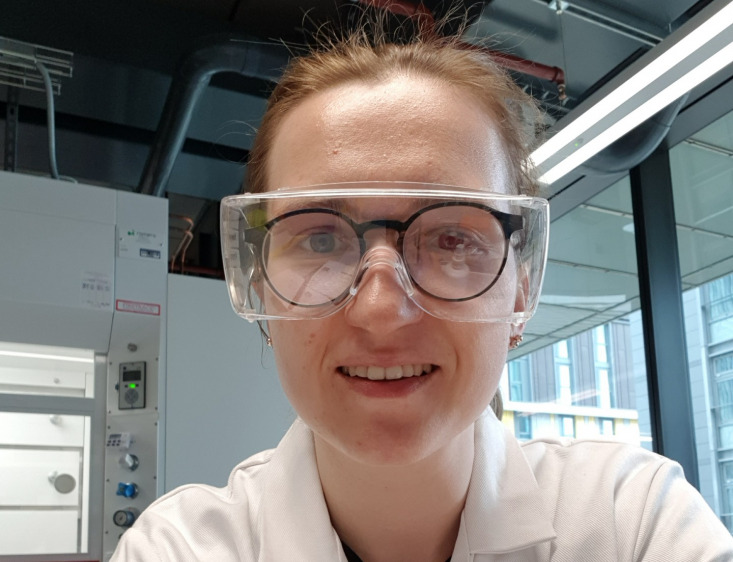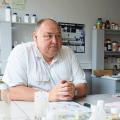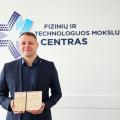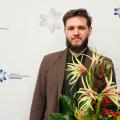News & Events
- Home
- News & Events
- News
News
2024. 01. 08
-
Lithuanian's paper in prestigious chemistry journal: glowing molecules that "search" for RNA structures were studied

Dr. Karolina Maleckaitė-Mačiulė during her internship at Imperial College London. Photo from personal archive
The prestigious Journal of the American Chemical Society (JACS) has published an article co-authored by Dr. Karolina Maleckaitė-Mačiulė, a researcher of the Department of Molecular Compound Physics at FTMC.
JACS is one of the top international chemistry journals with impact factor of 15 in the last two years, which is very high among chemical science journals.
"Although I am a physicist myself, I sometimes publish in chemistry journals. The disciplines are very intertwined," says Karolina. In autumn 2023, she defended her PhD on glowing molecules. In the lab, molecules are created that are injected into a cell and, when excited by a laser beam, start to glow. In the case of Maleckaitė-Mačiulė's work, these molecules indicate the viscosity of the cells, which is important in the study of diseases such as Alzheimer's disease, cancer and atherosclerosis.
The paper in JACS, meanwhile, focuses on a slightly different objective. In 2022, Karolina was a fellow at Imperial College London, where she and her colleagues studied fluorescent molecules that bind to RNA structures in the cell - known as G-quadruplexes, and pinpoint their specific locations.
"This is a new field, because there are very few similar molecules in the world that work so well," says the physicist. - G-quadruplexes used to be thought of as poor and unnecessary structures, but they are now being discovered to have a quite significant importance in cellular function. They are associated with RNA inter-binding, transport and translation, and the RNA-mediated response to stress in the cytoplasm."
It is therefore very important to keep track of how many G-quadruplexes are present in the cell. This is where the new molecules come in: most of the RNA structures in the cell are not quadruplexes, and this requires a high degree of precision.

(Illustration from the Journal of the American Chemical Society. The RNA G-quadruplex is marked with an F)
"My job was to study the fluorescent molecule itself. I took spectroscopic measurements, looking at how light absorption changes with concentration - what spectrum of light the molecule absorbs - so that we can then more easily identify where it glows. It was very important to make sure that the molecule only binds to RNA G-quadruplexes and not to other structures in the cell, so that we only see what we need to see," says K. Maleckaitė-Mačiulė.
The study used Fluorescence-lifetime imaging microscopy (FLIM). This means that the molecules were tested to see how long they glowed. If the light signal is long enough, the molecule has 'found' the structure needed and if the duration is too short, the object is not there.
"The development of such a molecule will allow us to study RNA-specific structures in more detail and to better understand how cells work and what processes are going on inside them. Perhaps in the future, this method will also help in the treatment of diseases," says FTMC researcher.
FTMC information
Related news:

2024. 05. 03
-
FTMC PhD student P. Rivera on the chemistry of the future: we need to stop and rethink how to work more sustainably
The young researcher took part in a panel discussion at the Open Readings 2024 conference.

2024. 02. 06
-
FTMC chemist Dr. A. Jagminas awarded the Lithuanian Science Prize!
Congratulations to our colleague!

2024. 01. 19
-
V. Pudžaitis, a chemist who studies the interaction of molecules with surfaces, is the new PhD
He tested SEIRAS method, which opens up new possibilities for scientists.
